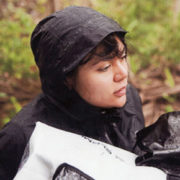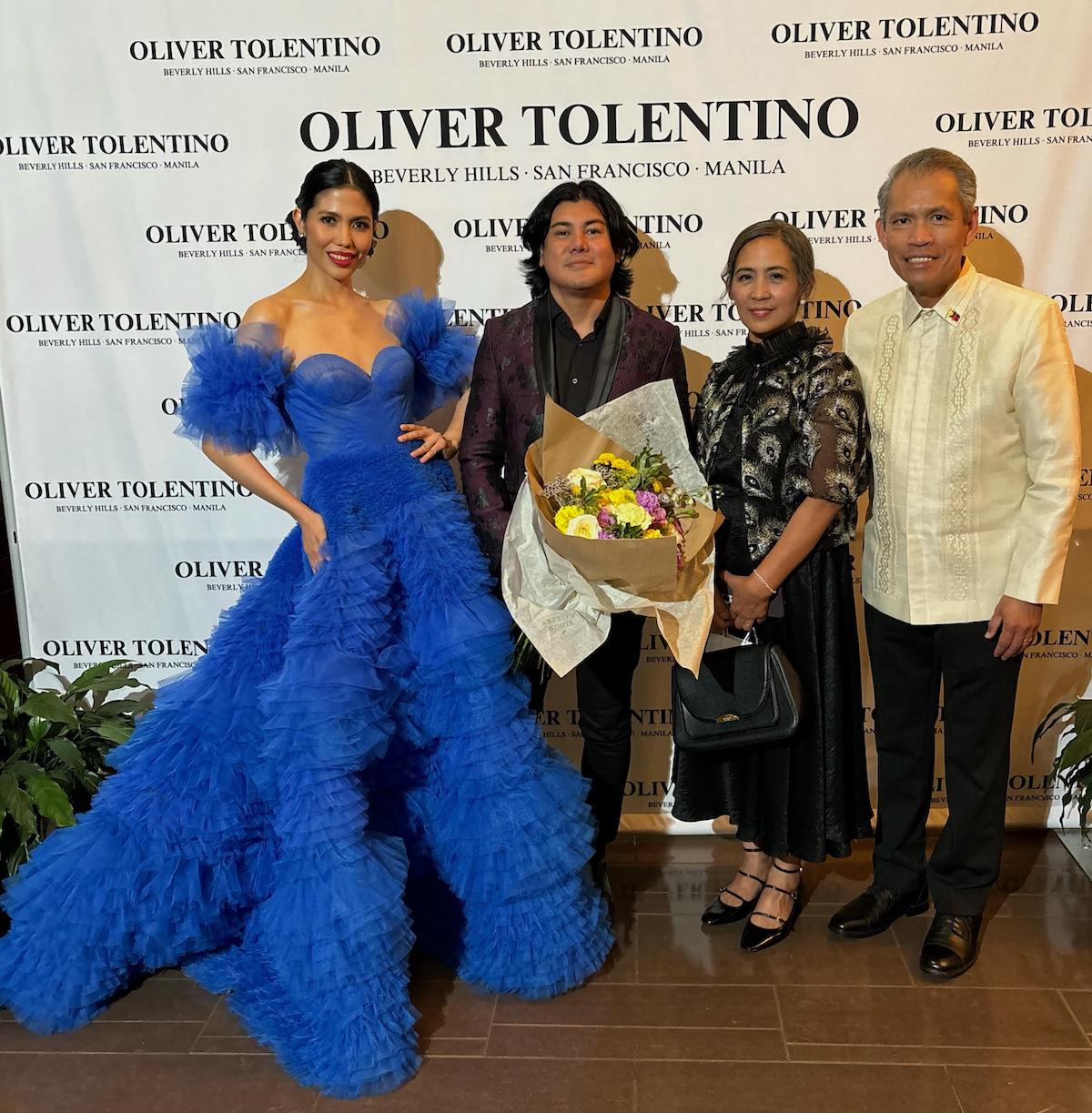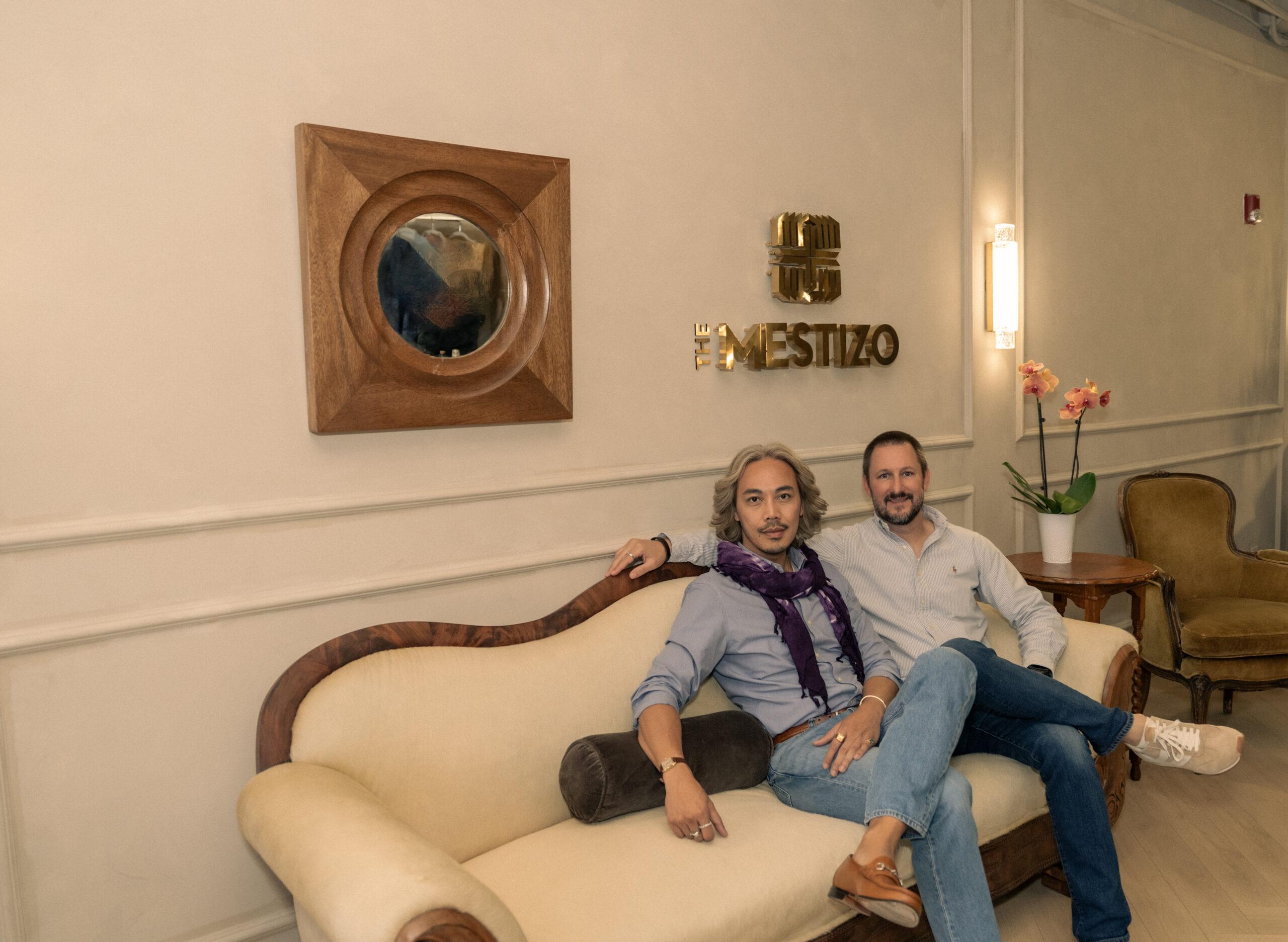A total of five Filipino and Filipino-American directors are showcasing their work in the upcoming 35th Asian American International Film Festival in New York City.
Leading the pack is H.P. Mendoza, the man behind two successful musical films that were screened at AAIFF in previous years – Colma: The Musical and Fruitfly, This year, he returns with not one but two entries: the horror film I Am a Ghost and Yes, We’re Open.
“Having two films in the festival is an interesting experience because I only wrote Yes, We’re Open but I wrote and directed I Am a Ghost. So, when I’m steeped in the dark, heavy world of I Am a Ghost, switching over to the light and sexual world of Yes, We’re Open is a nice respite before the next festival that plays both films. But it honestly makes me feel very good, especially since they’re two very, very different experiences. I’m very proud,” Mendoza told the Asian Journal.
The other feature director – Vincent Sandoval (Senorita) – is currently in Manila for the world premiere of his latest film Aparisyon at the ongoing Cinemalaya Film Festival.
Sandoval, a New York-based filmmaker, is founder of the Indio Bravo Film Foundation. Senorita, his film in this year’s AAIFF is developed from a short film with the same title, which screened in 20 international festivals including Cannes in 2010.
A year ago, this feature film gained the distinction of being only the third Filipino feature to compete at the Locarno Film Festival in 64 years after Celso Ad. Castillo’s Burlesk Queen in 1978 and Brillante Mendoza’s Masahista in 2005.
Then there are three short film directors – Jess dela Merced (Bleached), Clarissa delos Reyes (Johnny Loves Dolores) and Paolo Bitanga (Comrades).
Two other Filipinos have producer roles – Emilene Rodelas for Supercapitalist and Teresa Navarro who worked with Mendoza on Yes, We’re Open.
The AAIFF is celebrating its 35th anniversary this year with 48 feature-length and short films, many of them having their New York premieres.
“That fall of 1978, the first film festival in the nation (in the world, actually) dedicated to showing films created by Asian Americans opened at the Lower Eastside’s Henry Street Settlement with 46 films,” said John Woo, AAIFF’s executive director.
From musical to horror
Now known in the industry as that “musical guy”, Mendoza is trying his hand at horror, and I Am a Ghost is an experiment towards this direction.
This experiment was born from a thought experiment Mendoza had with magician Christian Cagigal, who used to do the Ghost Walks in San Francisco. Together they’d talk about how to “clinicalize” the supernatural and talk about spirits and hauntings as if there were scientific ways to explain them.
Mendoza cites Rosemary Guiley’s Encyclopedia of Ghosts and Spirits as an example, along with the now classic, Ghostbusters.
“If a haunting were a recorded memory, etched in time, what would it take to play it back?,” Mendoza asked. “So, I came up with the story of a woman whose consciousness was stuck floating through memories etched in the house she lived in.”
And to make sure that these memories felt like the audience’s own, Mendoza had to take an experimental approach.
“I totally took from the feelings I got while watching Stan Brakhage films, particularly Window Water Baby Moving. Every one of his films are haunting to me. They’re silent captured experiences that have been etched in time. I wanted to recreate that feeling,” he shared.
Mendoza believes that there’s really no transition from musical to horror.
“I never really embody a work so much that it becomes “that thing I do”. The embodiment is purely in the audiences’ eye, and I have no control over that,” he said. “If you love making films, then you love film. Genre doesn’t take difficulty into account.”
As a filmmaker (and an occasional actor), Mendoza is saddened by the current imbroglio being talked about in the theater scene – the non-casting of Asians in a play set in China.
“The La Jolla controversy is unfortunate because you have two sides who, against their better judgment, are demanding that the other side believe in what they believe – and that never works,” he said. “My opinion? You gotta cast some Chinese people in The Nightingale. Come on, you have to know the history of racism in America before you start making some “racially transcendent” piece.”
Love stories and green cards
Among the roster of short films is Johnny Meets Dolores, a story of two Filipino immigrants: a lonely clerk at a money remittance center and a jobless cleaning lady living illegally in Queens, New York, who form an odd arrangement during the recent economic downturn.
“In more than a decade of living in New York, I’ve met so many Filipinos immigrants who have their own stories to tell. I listened and kept a file of sorts in my mind, thinking someday that I will incorporate them into my own films,” said Clarissa delos Reyes when asked about her inspiration for the film.
Johnny Loves Dolores, like her other short films before it, comes from these encounters with fellow Filipinos and how they deal with the challenges of living far from family and home.
As an independent filmmaker, Delos Reyes says it’s almost a given that the biggest challenge is first and foremost, money.
“I had to borrow my way through film school and had to produce these films with a combination of loans and fundraising from my circle of family and friends,” she remarked.
Specifically for this film, Delos Reyes also faced a major challenge: casting. The film required an all-Filipino cast.
While there are certainly many talented working Filipino-American actors in New York City, Delos Reyes still could not find the right people to play “Johnny” and “Dolores.”
“Even before I had written the script, I already had a certain look for both characters in mind, and I wanted to cast as close as possible to this. It wasn’t just a matter of performance, but a certain presence that isn’t something that can just easily be conjured,” she explained.
Princess Punzalan was a no-brainer for “Dolores” but looking for “Johnny” took a while. With the help of some of her friends in film, she found her “Johnny” in Raul Arellano, who was previously in Raymond Red’s Himpapawid.
With the casting problem officially solved, Delos Reyes had to face what she calls as “one of the most nerve-wracking things about making this film”. Geography.
“My two lead actors were based in the West Coast. As a relatively new filmmaker, I rely a lot on rehearsals, which for obvious reasons, we couldn’t really do in person. I had to rehearse with the two leads over the phone or through Skype. In fact, I didn’t get to meet Raul in person until the very first day of our shoot,” she said.
Johnny Loves Dolores is relatively new to the festival circuit. So far, it has been to the LA Asian American, San Francisco Asian and most recently the Palm Springs International Shorts Fest. It also received some awards from NYU’s First Run Film Festival.
The best thing about these screenings?
“It’s getting really good feedback from the audience – both Filipinos and non-Filipinos. People like it enough to encourage me to write a feature version of the film. It’s funny because JLD was originally supposed to be a feature, and the first draft was certainly headed that way, but raising that much money for a feature became such a daunting task, that I decided to just shoot a short and see if I could generate interest in a feature that way.” Delos Reyes said.
Needless to say, a feature version is in the works.
Transgender issue
One feature that traces its roots from a short film is Sandoval’s Señorita.
“I originally conceived the idea for Señorita as a feature-length film way back in 2003/04. Believe it or not, it was originally a feminist dramedy in the vein of Erin Brockovich, but with a transgender woman as the protagonist,” Sandoval told the Asian Journal.
It evolved into what it is today after the director saw the 1971 Alan J. Pakula film Klute, starring Jane Fonda as a New York call girl trying to break away from the trade and start anew.
As the director, Sandoval’s biggest challenge was the fact that he was in New York for the pre-production and post-production phases of Señorita while his creative team was in Manila and Cebu. He was in the Philippines in September 2010 for barely a month to shoot: the rest of the time he was in New York.
“Having to operate in two different time zones drove me a little crazy, plus the fact that I wasn’t there in person for very critical things like casting, location scouting and editing. So, yes, being a hemisphere away made me feel like I relinquished some of the control over the process, which I have to admit is frustrating. It could’ve been a recipe for disaster, but my very talented and reliable team – especially my co-producer Darlene Malimas – kept the whole project together,” Sandoval shared.
Sandoval believes that it is important to tell Senorita’s story because mainstream Filipino films that feature transgender characters, according to him, almost always reduce them into caricatures-swishy, screaming faggots with nothing better to do than chase after boys.
“Señorita is transgressive because it subverts this small-minded representation. The main character Donna is psychologically complex: she has to grapple with her past and face the consequences of her actions. She’s fully fleshed out in her flaws and virtues,” he said.
Ultimately, what makes Señorita different is that Sandoval himself plays the transgender woman as a woman whom she perceives to be, not as a man playing dress up as a woman.
“If somebody watches this film and sees past the fact that the main character is transgender after the first 10 minutes and focus on her as an individual simply dealing with life issues, I will have done my job,” he added.
(The Asian American International Film Festival runs from July 25 to August 5. For more information about the Filipino-directed and Filipino-produced films, visit www.aaiff.org.)
(balikbayanmag.com)
(NYNJ Mag July 27, 2012 pg.2)






